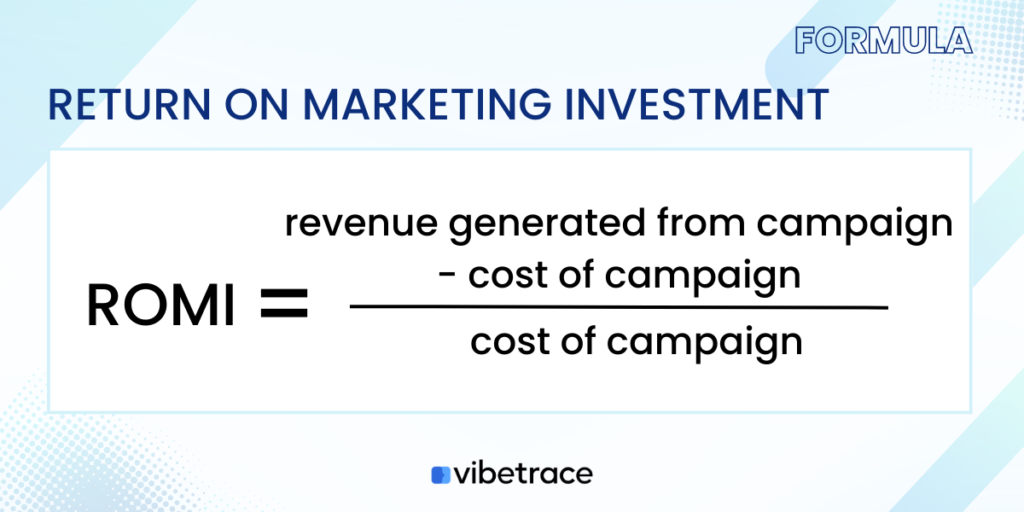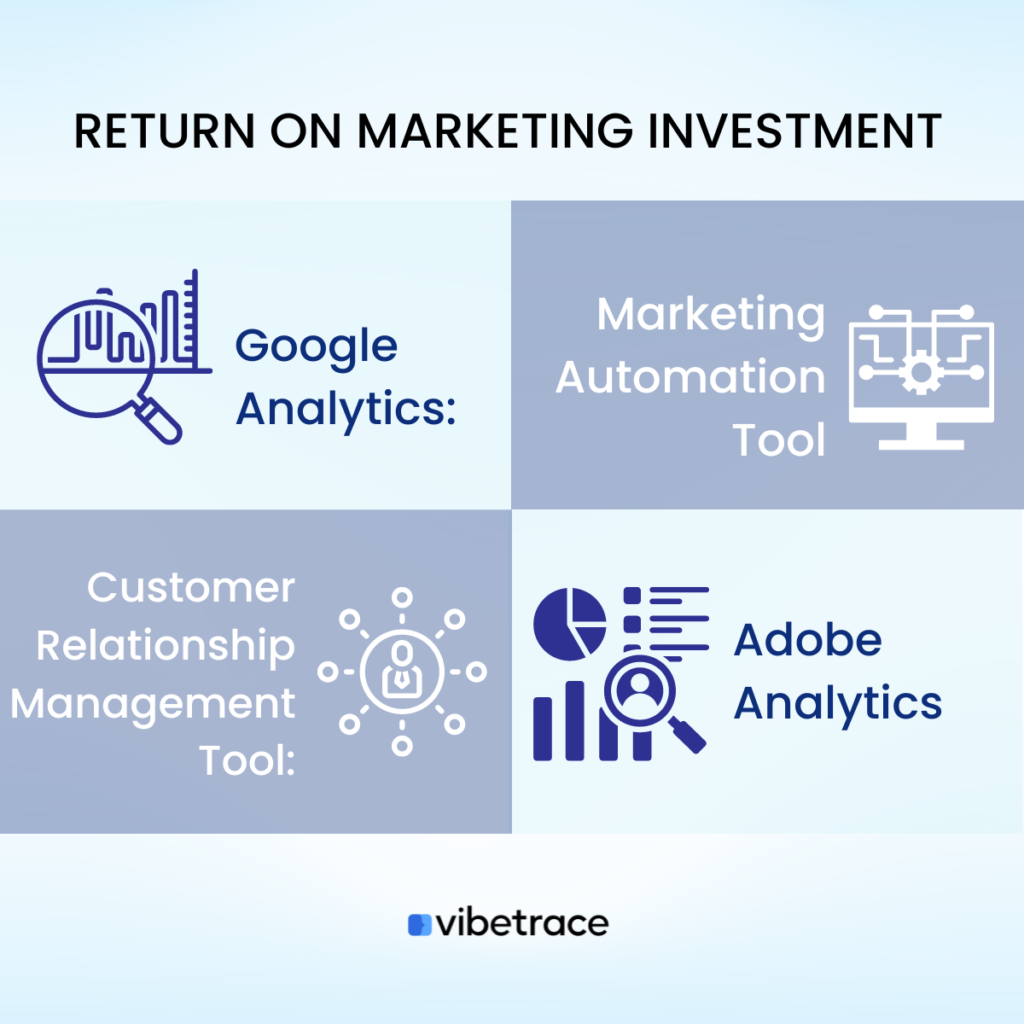Return on marketing investment is a crucial metric that provides valuable insights into a business’s ability to effectively target its marketing objectives.
Simply investing a large amount of money in producing resources is not sufficient. Even if you have the best products or services, it is useless unless people are aware of what you offer.
This is where marketing plays a critical role.
Advertising is a significant factor in the success of a business, which is why marketers track the Return on Marketing Investment to evaluate the effectiveness of campaigns in helping the business generate revenue.
What is Return on Marketing Investment?
Definition of Return on Marketing Investment
Return on Marketing Investment (ROMI) is a performance metric used to measure the effectiveness and profitability of a marketing campaign.
ROMI is similar to Return on Investment (ROI) but is specifically focused on evaluating the return generated by marketing activities.
ROMI can help you evaluate the effectiveness of your business’ marketing efforts and make data-driven decisions about where to allocate resources in the future.
It should not be viewed in isolation but rather as part of a broader analysis of marketing performance.
Do you like this article?
Join our CX for Retail dedicated newsletter!

Stay connected to what’s really important to optimize your digital revenues.
By clicking the button, you accept our Terms & Conditions. Also you will need to confirm your email address.
Return on Marketing Investment Formula
The formula to calculate Return on Marketing Investment (ROMI) is as follows:

ROMI is calculated by dividing the revenue generated by a marketing campaign by the total cost of the campaign, including both direct and indirect costs.
The resulting ratio provides insight into how much revenue was generated for every dollar spent on the campaign.
How to track Return on Marketing Investment?
Tracking ROMI over time helps you identify trends and patterns in the performance of your marketing campaigns and make adjustments to optimize returns.
There are several tools available to track Return on Marketing Investment (ROMI). Some of the commonly used tools are:

Google Analytics: It is a free tool that allows you to track the performance of your marketing campaigns and measure ROMI.
Marketing Automation Tool: It provides ROI reporting and allows you to track the performance of your marketing campaigns. Learn more about Vibetrace.
Customer Relationship Management (CRM) Tool: It is a customer relationship management (CRM) tool that provides ROI reporting and allows you to track the performance of your marketing campaigns.
Adobe Analytics: It is an enterprise-level analytics tool that provides insights into how users interact with your website and allows you to track the ROI of your marketing campaigns.
These tools help you track the performance of your marketing campaigns and calculate the ROMI. By analyzing the data, you can optimize your marketing strategies and improve the ROMI.
How often should you check Return on Marketing Investment?
The frequency of checking Return on Marketing Investment (ROMI) may vary depending on your business needs and goals.
However, it is recommended to regularly review and analyze ROMI on a monthly, quarterly, or annual basis to track the performance of your marketing campaigns and make necessary adjustments to optimize the ROI.
It is also essential to review ROMI in conjunction with other metrics to gain a more comprehensive understanding of the effectiveness of marketing strategies.
Return on Marketing Investment Calculator
Do you want to calculate your return on marketing investment? Use our simple calculator below.
Simple Return on Marketing Investment Calculator ROMI
Revenue Generated:
Cost of Campaign:
Return on Marketing Investment:
= ?
Important Things about Return on Marketing Investment
Here are some important things to consider about Return on Marketing Investment (ROMI):
ROMI considers all marketing expenses: ROMI takes into account the entire marketing investment, not just the cost of advertising. This includes the cost of creating marketing materials, conducting market research, and other expenses.
Provides a complete picture of marketing effectiveness: ROMI provides a more comprehensive view of marketing effectiveness than other metrics such as Return on Ad Spend (ROAS) because it considers the entire marketing process.
Time frame is crucial: It is important to consider the time frame when calculating ROMI as some marketing efforts may take longer to produce results than others.
Aids businesses in allocating resources and optimizing strategies: ROMI can help you make more informed decisions about where to allocate your marketing resources and how to optimize your marketing strategies to achieve better returns.
Metrics related to Return on Marketing Investment
Here are other metric related to ROMI that you can use to gain more insight on your business:
Customer Acquisition Cost
The cost of acquiring a new customer, including marketing and sales expenses.
Customer Lifetime Value
The estimated total value of a customer to a business over the course of their lifetime
Return on Marketing Investment
The return on investment in a marketing or advertising campaign
Gross Margin
Indicates if the business is generating a high-profit margin on its products.
Vibetrace can help you by providing tools and solutions that enable you to track and analyze the performance of your marketing campaigns across multiple channels, including email, web push notifications, and social media.
With Vibetrace, you can set up conversion tracking and monitor the revenue generated by your marketing efforts in real-time. You can also segment your audience based on different criteria such as behavior, preferences, and demographics, and create targeted campaigns that deliver personalized messages to each segment.
Moreover, Vibetrace offers A/B testing and optimization features that allow you to experiment with different campaign variations and identify which ones are producing the best results.

